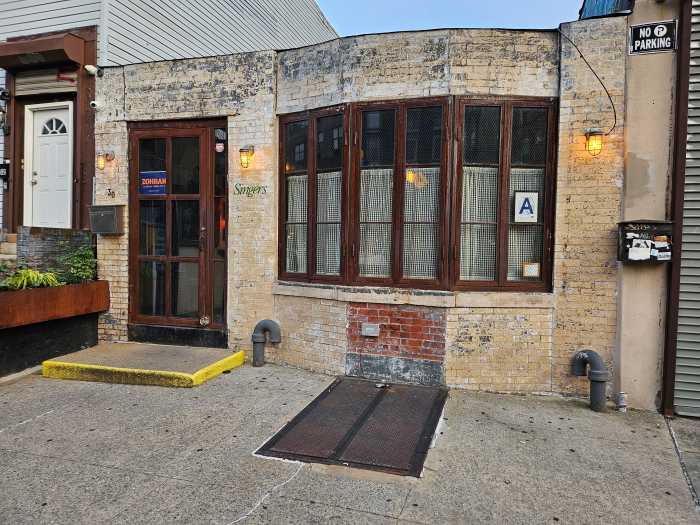
BY TERESE LOEB KREUZER |Director Sam Fleischner was 27 years old in the summer of 2010 when he started planning and writing a film about an autistic boy who gets lost for days on the New York City subway while his grief-stricken mother searches for him. That film, “Stand Clear of the Closing Doors,” debuted at the Tribeca Film Festival on April 20, just a few days after Fleischner finished it.
In the film, Ricky, the 13-year-old boy played by Jesus Sanchez Valez, lives in Rockaway Beach with his mother, Mariana (Andrea Suarez), an undocumented Mexican immigrant who supports the family by cleaning houses, and his older sister Carla (Azul Zorrilla). The children’s father, Ricardo, Sr. (Tenoch Huerta Mejía) is away “upstate,” trying unsuccessfully to earn some money (his employers fail to pay him) but not making waves because he doesn’t have immigration papers.
After Ricky’s mother berates him for missing a day of school, the boy enters a subway train that hurtles him far from his neighborhood. He has no idea where he is. He has no food, no water, only 75 cents in backpack. Out of fear of being deported, the family waits days before calling the police to report his disappearance.
When Fleischner started filming early in October 2012, Rockaway Beach was just another New York City seaside community — and the one in which he had lived for several years. Then, on October 29, Sandy struck and wiped large parts of it away. Like many of his neighbors, Fleischner lost his home.
“Our neighborhood was literally demolished,” he said, “and the subway was closed for over a week. It was impossible to finish the film as it was scripted.”
As the storm began to roll in, Fleischner filmed massive waves pounding on the beach. The plight of the boy adrift in a subway system that was about to be shut down became more horrifying, his family’s anguish, more agonizing. Fleischner shows Ricky in an empty subway car, then walking toward a black tunnel that will soon be inundated by the storm.
Sandy’s terror becomes visceral for the audience.
Some in the Tribeca Film Festival audience this year, like Fleischner, will have experienced Sandy’s power themselves.
“I haven’t found any words that can represent the experience I had,” he said. “I really don’t know how to talk about it.”
Others will have been sideswiped by Sandy or have just read about it. Whether Sandy is a presence in a film or not, all in the audience will find a number of movies in the festival that address issues raised by Sandy of loss, grief, resilience and the will to live.
“Stand Clear of the Closing Doors” is playing on Saturday, April 27, at 8:30 p.m. at Clearview Cinemas Chelsea, 260 W. 23rd St.
Short films: Recollections; The Rider and the Storm; The Last Time
From Japan comes a 13-minute-long documentary called “Recollections” that will certainly resonate with Sandy survivors. It was filmed in Yamamoto, 18 months after the Tohoku earthquake and tsunami. The film centers around a young man named Yuji Mizoguchi who is part of a disaster support team. His job is to work with photographs that were found in the ruins.
“Everyone had their pictures washed away by the tsunami,” he says. “When people lost everything, the first thing they looked for were family portraits. Without them, people felt they had lost their past. The victims needed a way to confirm their existence. When photos were returned, the owners felt like they had their life back.”
“The Rider and the Storm,” a 15-minute-long documentary, follows Timmy Brennan, an ironworker who is helping to build 1 World Trade Center. He lives in Breezy Point where his house burns down in the fires that raged there after Sandy.
“When you lose your home like we did, you realize what the important things are,” Brennan says.
As he digs in the ruins, his widowed mother hopes that he will find her engagement ring, which he does. Considering the enormity of what has happened, she seems calm, almost accepting.
Strong and athletic, Brennan’s passion is surfboarding. “I was not only digging for the family pictures and things like that, I was digging for that board,” he says in the film, “hoping it was under some debris or something like – maybe a couple of things, or whatever. But when I finally saw what was my board, it kind of hurt. It was just fold by fold of fiberglass, just blowing in the wind.”
Though the ocean has robbed him of shelter and security and the thing he loved most, he wants to return to it. A shopkeeper gives him a surfboard and finally Brennan cries. Then he gets on it and goes back out on the water, feeling his oneness with nature, which he says must be understood.
“The Last Time,” another short film in the Festival, deals with loss. Candy Kugel worked with her partner, Vincent Cafarelli, for 38 years producing animated ads, educational and kids’ programming and over a dozen independent shorts. One day, he said he wasn’t feeling that well. She walked him to the subway, hugged him and said good-by. He died that night.
“How could I know it would be the last time — and if I knew, what would I do?” she asks in the film.
That must be a question that many Sandy survivors who lost their homes, their possessions and their loved ones have asked themselves. How could they know that October 28, 2012 would be the last day of life as they knew it — and if they knew that, what would they do?
Reaching for the Moon
“Reaching for the Moon,” a film by Brazilian director Bruno Barreto, has nothing to do with Sandy but everything to do with loss. It’s about the creative and amorous relationship between poet Elizabeth Bishop and architect Lota de Macedo Soares, who was born into a wealthy and politically powerful Brazilian family. In 1951, Bishop, depicted in the film by Miranda Otto, went to Brazil for what she thought would be a brief vacation but ended up living with Soares (played by Gloria Pires) for 15 years.
Finally, Bishop’s alcoholism and the inevitable tensions between two strong-willed people drove them apart, and Bishop returned to New York City. Soares was hospitalized for depression, but then followed Bishop to New York, where she found her involved with another lover. In the film, Soares commits suicide in Bishop’s apartment — and Bishop, being the great poet she was, writes a great poem about loss.
It is twice cited in the film — once in the beginning and once at the end.
“The art of losing isn’t hard to master,” she wrote. “So many things seem filled with the intent//to be lost that their loss is no disaster.”
The poem deserves to be read as it was written, with line breaks and imagery intact — and then reread.
Sandy survivors will understand it very well.
“Reaching for the Moon” is playing on Saturday, April 27, at 11:30 a.m. at AMC Loews Village
For tickets and information, call (646) 502-5296 or go to tribecafilm.com/filmguide

































